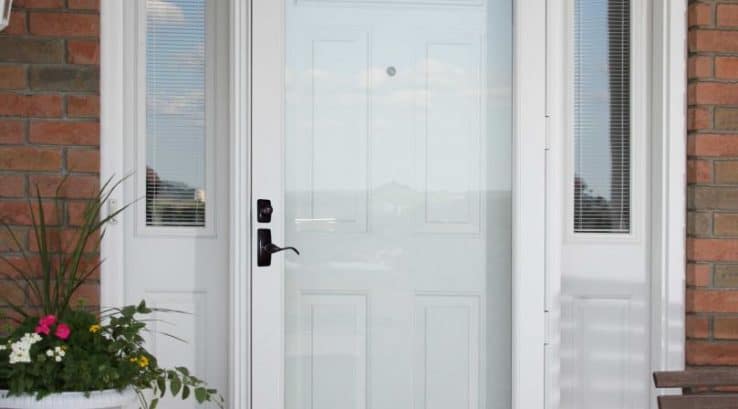Storm doors not only guard your entryway from the elements, but they come in a variety of custom styles and can flood your home with a new source of natural light. Especially in Maryland and other Mid-Atlantic states where cold, wet winters and rainy, humid summer days abound, the benefits of installing a well-fitting storm door are plenty. To make sure the door you select is the perfect fit for your home, we’ve provided tips on how to measure for a storm door.
Why Should You Install a Storm Door?
As mentioned before, there are numerous benefits of adding a storm door to your home. There are a variety of styles to choose from, so you can select the style of door that will benefit you the most.
Depending on the style you choose, a storm door can:
- Add ventilation to your home — a desirable perk during pleasant spring and fall days
- Add natural light to your home and provide you, your children and pets with a view
- Add security and deter potential burglars
- Protect your front door from wear and warping
- Increase your home’s curb appeal
- Save energy
Storm Door Styles
Storm doors come in a wide range of custom styles, allowing you to choose one that best suits your preferences and needs.
Storm doors can come with any of the following:
- Full glass panels
- Half-view glass panels
- Retractable screens that you can use to replace a glass panel during warmer months
- Custom hardware
Before You Begin
First, it’s important to make sure there’s room for a storm door in your entryway. To do this, you’ll need to examine the place where you’ll mount it — the trim around your exterior door. The trim, also known as brick molding, must:
- Be in good shape. If not, there are ways to replace damaged brick molding.
- Have a minimum depth of 1 inch.
- Be at least 3/4 of an inch wide.
- Have at least 2 1/2 inches of unobstructed clearance from the existing exterior door. Objects in the doorway or on the door, such as door handles, decor or mailboxes, must not protrude past this point. You’ll also want to ensure there’s enough clearance for the door to swing open fully.
Measuring For a Storm Door
Once you’ve ensured the space where you’ll mount the storm door checks out, it’s time to measure your trim. Fortunately, when measuring for a storm door you only need two dimensions — the trim’s width and height.
Your trim may be slightly wider or taller in different spots depending on the age of your home, possible warping and how the foundation has settled. That’s why you’ll need to measure the trim’s width and height in multiple locations to make sure your measurements are exact.
Remember: make sure when you’re measuring for a storm door that you measure your entryway’s exterior trim, or brick mold, not the door jamb.
Width
- Measure horizontally from one side of the interior edge of the trim to the other.
- Take three measurements: one at the top of the trim, one in the middle and one at the bottom.
- The shortest measurement of the three is the one you’ll use.
Height
- Measure vertically from where the door will sit (the threshold) to the top interior edge of the trim.
- Take three measurements: one at the left side of where the door will sit, one in the middle and one on the right.
- Again, you’ll use the shortest measurement of the three.
Now that you’ve learned how to measure for a storm door, you’re ready to begin the process of selecting your new door.
Find Your New Door from Thompson Creek
At Thompson Creek, we offer the highest grade of storm doors and provide you with the option of over a dozen styles of elegant hardware. Each of our aluminum storm doors is impeccably crafted and customizable.
Additionally, with Thompson Creek, you’re not alone in making your selection. Give one of our storm door experts a call today to receive a free consultation to discuss your storm door options, style preferences and needs.


